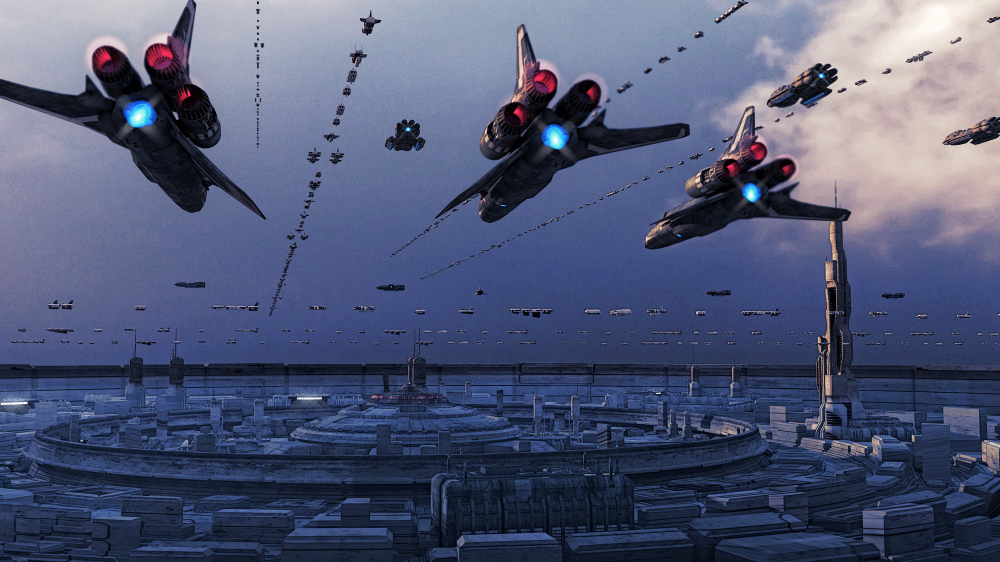Aerospace Defense: Revolutionizing with Technology and Virtual Delivery Centers

In today’s dynamic defense landscape, air superiority and precision strike capabilities have become crucial for maintaining global security. Aerospace defense has evolved to address these needs, leveraging advances in military aircraft, unmanned aerial vehicles (UAVs), and missile systems. These advancements not only offer strategic advantages in offense and defense but also redefine modern warfare with groundbreaking technologies like AI, autonomy, and hypersonics.
However, staying ahead in aerospace defense demands more than just cutting-edge technology; it requires access to specialized expertise and the ability to rapidly adapt to emerging threats. This is where Virtual Delivery Centers (VDCs), powered by platforms like AiDOOS, play a transformative role. By providing on-demand access to global talent and streamlining R&D processes, VDCs enable defense contractors to accelerate innovation and maintain a competitive edge.
Let’s explore how the three pillars of aerospace defense—military aircraft, UAVs, and missile systems—are reshaping global security and how VDCs are revolutionizing the way these systems are developed.
Military aircraft remain at the heart of aerospace defense, delivering unparalleled versatility and performance. Modern fighter jets like the F-35 Lightning II and Dassault Rafale exemplify the evolution of aerial combat platforms, offering multi-role capabilities that include air superiority, ground attack, and intelligence, surveillance, and reconnaissance (ISR).
Key Advancements in Military Aircraft:
Stealth Technology: Reduces detectability by radar, enabling undetected missions in contested airspace.
AI-Driven Avionics: Enhances pilot decision-making by analyzing mission-critical data in real time.
Hypersonics: Enables aircraft to reach speeds beyond Mach 5, drastically reducing response times during critical operations.
Next-generation military aircraft are pushing the boundaries of innovation with AI-assisted systems that improve situational awareness, autonomous flight capabilities, and modular designs for enhanced adaptability. These advancements ensure that nations maintain air dominance in increasingly contested skies.
Unmanned Aerial Vehicles (UAVs) have revolutionized warfare, offering unparalleled versatility and precision. Initially designed for surveillance, UAVs like the MQ-9 Reaper and RQ-4 Global Hawk now perform a wide range of missions, including precision strikes, logistics, and autonomous target tracking.
Key Innovations in UAV Technology:
Autonomous Swarming: Swarm drones operate collaboratively to overwhelm enemy defenses.
AI Integration: Enables UAVs to execute complex maneuvers and identify targets with minimal human intervention.
Expanded Use Cases: Beyond combat, UAVs are critical in disaster relief, border security, and agriculture.
For instance, swarm drones equipped with AI can neutralize enemy defenses by coordinating attacks, while single UAVs can deliver humanitarian aid in conflict zones. This dual-use capability highlights the transformative role of UAVs in both military and civilian applications.
Missile systems represent the ultimate blend of precision and deterrence in aerospace defense. Whether it’s intercontinental ballistic missiles (ICBMs) or cruise missiles, these systems ensure nations can project power or neutralize threats with pinpoint accuracy.
Breakthroughs in Missile Technology:
Hypersonic Missiles: Travel at speeds exceeding Mach 5, making them nearly impossible to intercept.
AI-Driven Guidance Systems: Provide real-time course adjustments for enhanced precision.
Integrated Defense Systems: Platforms like the Patriot and S-400 intercept incoming threats across multiple domains (air, sea, and land).
Hypersonic missiles are particularly transformative, offering unprecedented speed and maneuverability. Paired with advanced missile defense systems, they represent both an offensive and defensive cornerstone in modern military strategy.
The development of military aircraft, UAVs, and missile systems is an intricate process requiring cross-disciplinary expertise, extensive R&D, and seamless integration of cutting-edge technologies. Traditional methods often face delays due to talent shortages, long development cycles, and escalating costs.
How VDCs Enable Aerospace Innovation:
On-Demand Expertise: Provides access to global talent specializing in AI, avionics, propulsion systems, and cybersecurity.
Rapid Scalability: Enables defense contractors to scale teams quickly without the need for permanent hires.
Cost Optimization: Reduces overhead by offering project-based engagements tailored to specific needs.
End-to-End Project Support: From concept design to testing and deployment, VDCs ensure streamlined execution.
Enhanced Security: Adheres to strict compliance and cybersecurity protocols to protect sensitive defense projects.
For example, a defense contractor developing a hypersonic missile can leverage a VDC to onboard AI experts for guidance systems, aerodynamic engineers for propulsion optimization, and software developers for real-time monitoring systems—all without the delays and costs of traditional hiring.
By embracing VDCs, defense organizations can innovate faster, reduce time-to-market, and remain agile in an ever-changing global security landscape.
The integration of AI, autonomy, and hypersonic technologies represents the next frontier in aerospace defense. These advancements will redefine warfare by enabling faster, more precise, and more adaptable operations.
In the near future, we can expect:
Autonomous Combat Aircraft: Unmanned fighters capable of independent missions.
AI-Augmented Decision-Making: Systems that provide actionable insights in real time.
Sustainable Aviation: Development of fuel-efficient engines and eco-friendly materials.
Platforms like AiDOOS and their VDC model will be instrumental in this evolution, offering defense contractors the tools and talent needed to innovate at scale. By leveraging these capabilities, nations can ensure their aerospace defense strategies remain robust, agile, and forward-thinking.
The future of aerospace defense depends on agility, expertise, and cutting-edge technology. Whether you're developing next-generation military aircraft, autonomous UAVs, or hypersonic missile systems, AiDOOS is your trusted partner in innovation.
Why Choose AiDOOS?
Access global talent on demand.
Streamline development with Virtual Delivery Centers.
Focus on innovation while we handle execution.
Let’s redefine the future of defense together. Contact AiDOOS today to explore how our expertise can empower your aerospace projects to reach new heights.
Military Aircraft: Advanced multi-role platforms with AI and hypersonic capabilities.
UAVs: Autonomous drones and swarm technologies reshaping combat and civilian applications.
Missile Systems: Precision strikes with hypersonic and AI advancements.
Virtual Delivery Centers: A game-changing model to accelerate aerospace innovation.

For modern telecom enterprises, delivering exceptional QoS is no longer optional—it’s a brand differentiator and a strategic lever for growth. Static provisioning models won’t cut it in a world of hyper-dynamic data usage.